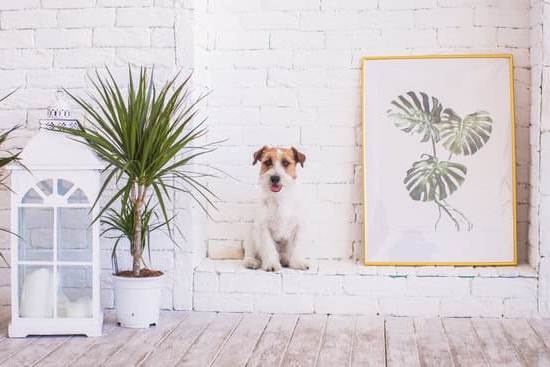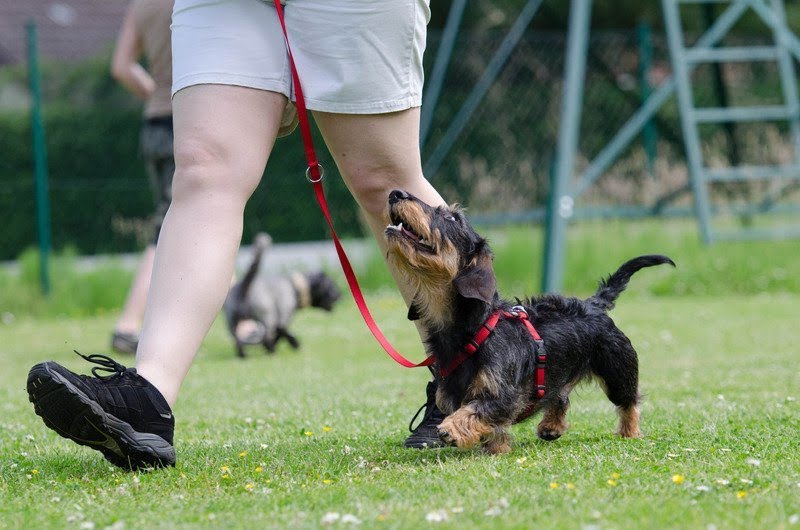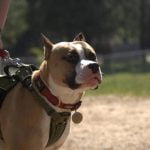Training dogs to hug each other can be a heartwarming and rewarding experience for both pet owners and their furry companions. Not only does it promote bonding and strengthen the relationship between dogs, but it also fosters a sense of trust and camaraderie among them. In this article, we will delve into the essential steps on how to train dogs to hug each other, from understanding dog behavior to overcoming challenges that may arise during the training process.
Dogs naturally exhibit affectionate behaviors towards each other, including hugging, as a way to communicate and establish social bonds. By teaching dogs how to hug each other in a controlled and positive manner, pet owners can enhance their pets’ social skills and overall well-being. Building trust is crucial in laying a strong foundation for successful training, as it ensures that both dogs feel comfortable and safe during the hugging process.
Establishing clear communication through basic commands like sit, stay, and release is key in guiding dogs through the hugging training. Introducing the hug command gradually with patience, consistency, and positive reinforcement will help dogs understand the desired behavior. By celebrating successes and rewarding good behavior, pet owners can encourage their dogs to continue hugging each other harmoniously.
Understanding Dog Behavior
Dogs are known for their affectionate nature, often displaying behaviors that mimic human expressions of love and care. One common behavior that many dog owners observe is dogs hugging each other. This natural act of embracing can signify trust, friendship, and a strong bond between the canine companions. Understanding why dogs hug each other naturally can provide valuable insights into how we can train them to continue this heartwarming gesture.
When dogs hug each other, it is often a way for them to show affection and establish social connections within their pack or group. In the wild, wolves and other canine species engage in physical contact such as nuzzling, licking, and leaning against each other as a way to strengthen their relationships. Hugging can also be a display of dominance or submission among dogs, depending on the context and body language exhibited during the embrace.
To train dogs to hug each other effectively, it is essential to recognize and respect their natural instincts and behaviors. By understanding why dogs hug each other naturally, trainers can tailor their approach to teaching this command in a way that aligns with the dog’s communication style and preferences. Through building trust, using positive reinforcement techniques, and providing clear guidance on desired behaviors, dogs can learn to hug each other in a safe and mutually enjoyable manner.
Building Trust
Establishing trust is crucial when it comes to training dogs to hug each other. Dogs, like humans, need to feel safe and secure in their environment in order to learn and follow commands effectively. To build trust between two dogs, start by allowing them to interact in neutral territory where they can sniff each other and get acquainted without any pressure. This initial interaction sets the tone for their future interactions and helps build a foundation of trust.
In addition to physical interactions, positive reinforcement plays a key role in building trust between dogs. Rewarding good behavior with treats, praise, or toys helps create a positive association with the training process. Consistency is also important – be sure to set clear expectations for both dogs and reward them consistently for following commands correctly. This will help establish boundaries and reinforce trust between the dogs.
Another way to build trust between dogs is by observing their body language and addressing any signs of discomfort or tension immediately. By understanding how dogs communicate through their body language, you can intervene if one dog seems anxious or stressed during training sessions. Creating a safe and supportive environment where both dogs feel comfortable expressing themselves will strengthen their bond and make them more receptive to learning how to hug each other.
| Building Trust Strategies | Benefits |
|---|---|
| Allowing neutral interactions | Establishes a foundation of trust |
| Positive reinforcement | Creates a positive association with training |
| Observing body language | Promotes comfort and communication between dogs |
Teaching Basic Commands
Training your dogs to hug each other can be a rewarding and heartwarming experience. However, before diving into teaching them the actual hugging command, it is essential to establish a strong foundation by teaching them basic commands such as sit, stay, and release. These basic commands not only serve as building blocks for more advanced training but also help in developing good behavior and obedience in your furry companions.
To start off, begin with teaching your dogs the “sit” command. This command is useful in various situations and helps in calming down your dogs before proceeding to the next step of training. Use treats or toys as positive reinforcement when they successfully execute the command to encourage them to follow through.
The next important command to teach is “stay.” This command is crucial when training your dogs to hug each other as it helps in creating a sense of control and focus. Start by having your dogs sit, then give the “stay” command while taking a step back.
Gradually increase the distance and duration of their stay while rewarding them for obeying. Once they have mastered this command, you can move on to teaching them the “release” command to let go of the hug at your cue.
Introducing the Hug Command
Teaching dogs to hug each other can be a fun and rewarding experience for both the dogs and their owners. The hug command is not only a cute trick but also a great way to promote bonding and positive interactions between dogs. Before starting with the training, it is essential to ensure that the dogs involved are familiar with basic commands such as sit, stay, and release. This will create a strong foundation for teaching them the hug command.
To begin with, start by having both dogs in a relaxed and calm state. You can use treats or toys to keep their attention focused during the training session. Position the dogs side by side in a sitting position facing the same direction.
Using a treat, guide one dog’s head slightly over the other dog’s shoulder while gently pushing their bodies closer together. As they get into this position, give the command “hug” in a gentle and encouraging tone.
It is important to repeat this process multiple times until both dogs become comfortable with hugging each other on command. Be patient and provide positive reinforcement such as treats, praise, or belly rubs each time they successfully execute the hug command.
Remember that consistency is key when training dogs, so make sure to practice regularly to reinforce this behavior. With time and practice, your furry friends will learn how to hug each other on cue, strengthening their bond and promoting harmonious relationships between them.
Practicing Patience
Training dogs to hug each other may take time, patience, and dedication. Consistency in your training approach is crucial to ensure that your canine companions fully understand and comply with the hug command. Using positive reinforcement techniques such as treats, praise, and affection will motivate your dogs to repeat the desired behavior.
Here are a few tips on how to train dogs to hug each other effectively:
- Be patient and persistent: Rome wasn’t built in a day, and neither are well-trained dogs. Stay calm and composed during training sessions, even if progress seems slow.
- Set clear expectations: Clearly communicate what you expect from your dogs when teaching them the hug command. Use a firm but gentle tone to give instructions.
- Practice makes perfect: Consistent practice is key to reinforcing the behavior you want to see. Regular training sessions will help your dogs master the art of hugging each other.
Remember that every dog learns at their own pace, so it’s essential to tailor your training approach based on their individual personalities and learning styles. By being patient, consistent, and positive in your reinforcement methods, you can successfully teach your furry friends how to embrace each other with love and affection through hugs.
Overcoming Challenges
Identifying Signs of Aggression and Fear
When training dogs to hug each other, it is important to be vigilant for signs of aggression or fear in either canine. Aggressive behavior can manifest through growling, showing teeth, snapping, or stiff posture. On the other hand, fear can be exhibited through trembling, cowering, avoidance behavior, or submissive urination. By recognizing these signs early on, you can address them effectively and prevent any potential conflicts during the training process.
Utilizing Counterconditioning Techniques
To address aggression and fear in dogs during the training to hug each other, it is essential to incorporate counterconditioning techniques. This involves changing the dog’s response to a particular stimulus by associating it with something positive.
For example, if one of the dogs shows fear when approached for a hug, you can gradually introduce the hug command while offering treats and praise simultaneously. This will help the dog associate hugs with positive experiences and reduce their fear over time.
Seeking Professional Help if Needed
In some cases, addressing aggression and fear in dogs may require professional assistance from a certified dog trainer or behaviorist. If you encounter severe aggression issues or underlying behavioral problems that inhibit your dogs from hugging each other safely, seeking professional help is crucial.
A trained expert can assess the situation accurately and provide tailored solutions to create a harmonious environment for your furry companions to embrace each other without fear or hostility. Remember that ensuring the safety and well-being of your dogs should always be the top priority when overcoming challenges during training sessions.
Celebrating Success
Setting the Stage for Success
Training dogs to hug each other can be a rewarding experience, but it requires patience, consistency, and positive reinforcement. Celebrating success starts with setting the stage for positive interactions between the dogs. Make sure that both dogs are comfortable and relaxed before attempting to teach them to hug. Creating a calm and safe environment will increase the chances of success in training.
Choosing the Right Rewards
When celebrating success in training dogs to hug each other, it is essential to choose the right rewards. Positive reinforcement is crucial in reinforcing good behavior. Treats, verbal praise, and petting are popular rewards that can motivate dogs during training sessions. It is important to find out what motivates each dog individually and use those rewards effectively to encourage them to hug each other successfully.
Consistency Is Key
Consistency is key when celebrating successes in dog training. Be sure to reward the dogs every time they successfully display the desired behavior of hugging each other. Consistent rewards will help reinforce the behavior and make it more likely for them to repeat it in the future. Remember that training takes time and practice, so celebrating small victories along the way will keep both dogs motivated and engaged in the learning process.
Maintaining a positive attitude throughout the training process is essential for celebrating success with your furry friends. By following these tips and staying patient, consistent, and positive, you can create a strong bond between your dogs while teaching them how to hug each other effectively.
Tips for Maintaining Positive Relationships Between Dogs
Training dogs to hug each other can greatly enhance their bond and create a harmonious relationship between them. By understanding the importance of this training, we can foster trust, build communication, and promote positive interactions between our furry companions. Through patience, consistency, and positive reinforcement, pet owners can teach their dogs to embrace each other with the hug command.
One of the key aspects of maintaining positive relationships between dogs is through regular playtime. Play sessions allow dogs to burn off excess energy, release stress, and strengthen their social skills. It also provides an opportunity for dogs to learn how to interact with each other in a friendly and respectful manner.
Socialization is another crucial component in promoting healthy relationships between dogs. Exposing them to diverse environments, situations, and other canine friends can help prevent behavioral issues and encourage polite behavior.
Bonding exercises are also essential in nurturing strong connections between dogs. Engaging in activities such as walking together, training sessions, or even relaxing cuddle time can deepen the relationship between dogs. By spending quality time with both pets individually as well as together, pet owners can reinforce positive behaviors and reinforce the training they have worked so hard on achieving. Ultimately, creating a loving environment where dogs feel secure and valued is key to maintaining a harmonious relationship between them.
Frequently Asked Questions
Do Dogs Naturally Hug Each Other?
Dogs do not naturally hug each other in the same way that humans do. While dogs may engage in behaviors like leaning against each other or resting their heads on another dog’s back, it is not the same as hugging as humans understand it.
How Do I Get My Dog to Like Hugs?
If you want your dog to enjoy hugs, it’s important to pay attention to their body language and respect their boundaries. Start by slowly introducing physical contact, like gentle petting and cuddling, and observe how your dog reacts. Reward positive responses with treats and praise to create positive associations with hugs.
Should I Teach My Dog to Hug?
Teaching your dog to hug is not necessary and may even be confusing for them since it’s not a natural behavior in the canine world. Instead of trying to teach your dog to hug, focus on building a strong bond through positive reinforcement training, exercise, mental stimulation, and regular affectionate interactions based on what your individual dog enjoys.

Welcome to the blog! I am a professional dog trainer and have been working with dogs for many years. In this blog, I will be discussing various topics related to dog training, including tips, tricks, and advice. I hope you find this information helpful and informative. Thanks for reading!





